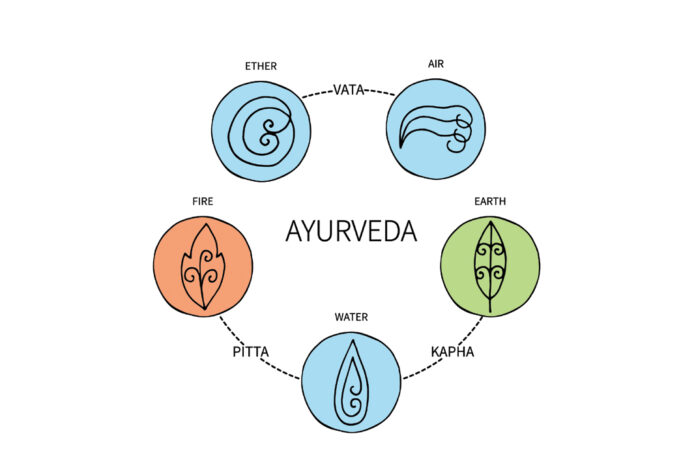
By David Lee, L.Ac.
Korean Sasang medicine is gaining acceptance for its ease of use and impressive ability to treat diseases. But making a constitutional diagnosis is still a challenge. Fortunately, India’s Ayurvedic Medicine is an additional tool to help understand the Sasang types and therefore to improve our skill correctly deriving a diagnosis. Practiced for at least 3,000 years as a primary method of healthcare, Ayurveda’s objective is to balance the human mind, body, and spirit. Its constitutions are called doshas, which one has from birth through lifetime. Indian practitioners encourage a natural balance, understanding that a disease intervention is not as effective.
Because these two world medicines were independently developed because of the difference in culture, language, philosophy, region, food and plant medicine, there are varied views of the constitutions. But we can find an underlying commonality that connects them together at the foundation.
The 3 doshas of Ayurveda are called Vata, Pitta, and Kapha. Although the words are different, their characteristics are same as the Sasang constitutions. Vata is a Greater Yang. Pitta is a Lesser Yang. Kapha itself is a Greater Yin and Lesser Yin combination. Kapha is a Greater Yin when combined with Pitta. Lastly, Kapha is a Lesser Yin when combined with Vata.
|
Doshas |
Sasang |
Tetrasoma Acupuncture |
|
Pitta+Vata |
Soyangin |
Lesser Yang + Greater Yang |
|
Kapha+Pitta |
Taeumin |
Greater Yin + Lesser Yang |
|
Kapha |
Soeumin |
Lesser Yin + Greater Yin |
|
Vata |
Soeumin |
Lesser Yin + Greater Yang |
|
Kapha+Vata |
Soeumin |
Lesser Yin + Greater Yang |
The following are key Ayurvedic descriptions which are same as that of the Sasang constitutions.
Pitta-Vata is a Soyangin: Pittas have a fiery nature that manifests in both mind and body. They are cerebral, sharp, precise, sharp-witted, direct, and often outspoken. They have strong appetite and excellent digestion, which sometimes leads them to believe they can eat anything. The body temperature is warm, and they tend to warm up easily. Energy occurs in bursts. They are generally creative and often impulsive. They are small to medium in stature and usually quite agile.
Kapha+Pitta is a Taeeumin: These individuals have strong willpower and are more focused, with a clear goal-oriented nature. They are grounded, hardworking, and powerful with stability, creating the ability to move large obstacles. They have a combination of a resilient and competitive side with a calm, laid back demeanor. They have the perseverance to see through long projects. They are outspoken and readily delegate responsibilities. They are typically action-oriented, especially in responsible roles. Physical frame is robust and muscular. Many perspire easily.
Vata is a Soeumin: Flexible and easily adapting. They love excitement and experiencing new things, thrive on creativity, and produce short bursts of energy usually followed by fatigue. They are lively conversationalists. They have automatic tendency to give assistance and be helpful. The physical body is thin, light frame. They get fatigued easily, requiring frequent rests. They get chilled easily. Hands and feet can get cold easily. They sleep light and their digestion can be sensitive.
Kapha-Vata is also a Soeumin: They are heavy, slow, steady, solid, and soft. Naturally calm, thoughtful, caring and loving. They are comfortable with a routine from the values of loyalty, patience, steadiness, and support. They have the longest hold on to things, jobs, and relationships. They can be stubborn and most resistant to change. They are loving, nurturing and grounded with calmness, mindfulness, and affection. They are attracted to caring and managerial careers. Kapha types physically strong build and have excellent stamina. Their movements are slow and deliberate. Thick hair and concentrated on scalp. Much of the weight gain is from fluid retention. The digestive system is weak and will easily develop problems like bloating and constipation.
Commonality in this constitutional perspective is a bridge that unifies Ayurveda and Sasang medicines together. Knowing the diagnosis of one medicine allows the practice of the other. For Sasang practitioners of constitutional herbal medicine and constitutional acupuncture, Ayurveda is an additional tool to help make a correct diagnosis.
































